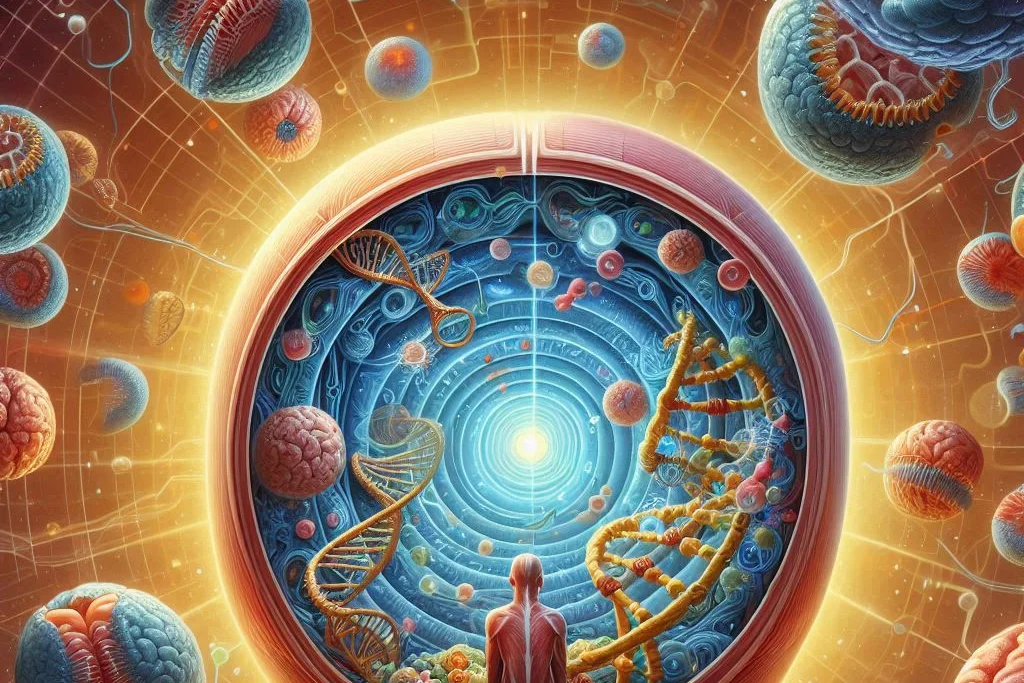How NEAT1 RNA Helps Repair DNA and Fight Cancer
Curious how cells fix DNA damage and what role RNA plays? Discover NEAT1 and its potential impact on future cancer therapies!

DNA remains under constant pressure — from internal events like cell division to external influences such as ultraviolet rays and chemical exposure. Thankfully, natural repair mechanisms are in place to help manage this damage.
Recent research has revealed an unexpected role for a molecule known as long non-coding RNA, particularly NEAT1, in maintaining genome stability. When NEAT1 is highly methylated, improved recognition and repair of broken DNA strands has been observed. This insight offers potential for future cancer therapies focused on tumors with elevated NEAT1 expression.
Genome Instability and Wellness Implications
Each time a cell undergoes division, its genetic material faces the risk of damage. The process requires precise duplication of billions of DNA letters, a task that can occasionally result in errors. Damage does not arise from cell division alone. Over time, consistent exposure to elements such as sunlight, alcohol, or tobacco smoke may further compromise DNA integrity, contributing to increased disease vulnerability.
To combat this, cells rely on an intrinsic network of repair strategies. Known as the DNA damage response (DDR), this system activates specific signals that detect errors and initiate repairs. Through these mechanisms, cellular health and genetic balance are supported.
Uncovering a New Role for RNA in Cellular DNA Protection
A research team at Julius-Maximilians-Universität Würzburg (JMU) in Bavaria, Germany, has explored an overlooked aspect of the DNA damage response. Findings revealed a newly identified mechanism, involving an RNA transcript, that plays a role in this vital repair process. These insights help deepen understanding of how RNA metabolism is linked to genome stability.
Responsibility for the study was held by a junior research group within the Department of Biochemistry and Molecular Biology. The results were published in the journal Genes & Development.
Focus was placed on long non-coding RNA transcripts, which are believed to act as regulators of genome health. Among them, nuclear enriched abundant transcript 1 — or NEAT1 — has drawn attention due to its elevated levels in many tumor cells. NEAT1 has also been observed to respond to DNA damage and stress signals within the cell, though its exact function had remained unclear.
The working theory proposed that NEAT1 plays a role in safeguarding the genome during disruptions to DNA integrity. This was tested through controlled studies using human bone cancer cells, where DNA double-strand breaks were induced. The outcome revealed an increase in both NEAT1 transcripts and N6-methyladenosine (m6A) marks on NEAT1 in response to the damage.
These findings suggest that NEAT1, and its modification, may be integral to how cells maintain genetic stability during times of stress.

RNA Modifications and the Body’s Hidden Repair Tools
Methylation marks on RNA transcripts represent a relatively new area of study. This field, known as epitranscriptomics, explores how chemical changes to RNA influence gene activity. Methyl groups are known to play a key role in this process. In many cancer cells, RNA modifications are often found to be disrupted or misplaced.
Unexpected findings have highlighted NEAT1 — a long non-coding RNA — as a participant in the cellular response to DNA damage. Experimental work has shown that frequent DNA double-strand breaks lead to increased methylation of NEAT1. This methylation causes changes in NEAT1’s structure, allowing it to accumulate at damage sites and assist in marking the broken DNA.
Although NEAT1 does not directly repair damaged DNA, it plays an important supporting role. Research from the Würzburg team found that NEAT1 helps activate a DNA repair factor by controlling its release. This process allows for precise detection and repair of DNA damage, helping preserve cellular integrity.
This discovery offers new insight into potential cancer treatments. Scientists suggest that understanding how NEAT1 methylation influences DNA repair could lead to targeted therapies, particularly in tumors with high NEAT1 levels. Further research will be needed to determine whether these early findings can be applied to more complex biological models.
Summary
Long noncoding RNAs, especially NEAT1, have been found to help protect the genome. NEAT1 is often found in high amounts in tumors and reacts to DNA damage. In response to serious DNA breaks, NEAT1 becomes more abundant and gains specific chemical tags (m6A), which change its structure and help it gather at damaged DNA sites. This helps signal that repairs are needed. When NEAT1 is removed, damage builds up because repair signals are weakened. NEAT1’s protective role is supported by the enzyme METTL3 and involves releasing another protein, CHD4, which helps adjust DNA packaging at damaged spots. These findings suggest NEAT1 plays a direct role in helping cells respond to DNA damage
